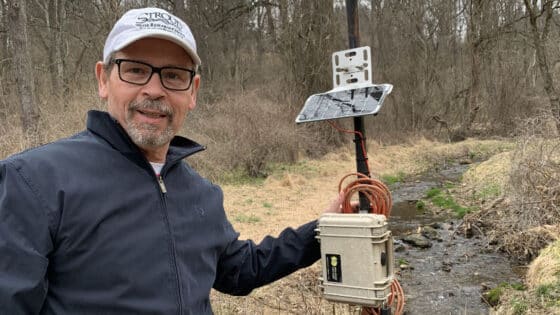Eldridge, W., M. Bacigalupi, I. Adelman, L. Miller, and A. Kapuscinski. 2002. Canadian Journal of Fisheries and Aquatic Sciences 59(2):282–290.
Abstract
Walleye (Stizostedion vitreum) from two northern Minnesota spawning stations (Pike River, Hudson Bay drainage, and Little Cutfoot Sioux Lake, Mississippi River drainage) simultaneously stocked as fry into five southern Minnesota lakes had different survival rates. One year after stocking, Pike River walleye were more abundant than their original proportion of 46.5% of the stocked fish, but by the end of their second summer, neither population had a clear survival advantage. In the three lakes where walleye were consistently sampled, natural-origin walleye that descended from previous stockings significantly increased in percent of all sampled walleye over the study (P = 0.001). The unmarked and untagged stocked fish (N = 566) were assigned to their source population by comparing their genotypes at nine microsatellite DNA loci to the known genotypes of the parent pairs crossed in a hatchery (parentage assignment). Fish not assigned to a parent pair were considered to be the product of natural reproduction (N = 177) by previously stocked fish. Simulations indicated that natural-origin walleye were sufficiently excluded from assignment to stocked fish parent pairs so as not to bias the comparison. Parentage assignment is a powerful population discrimination tool if genotypes are known for all parent pairs from all but one putative source.


